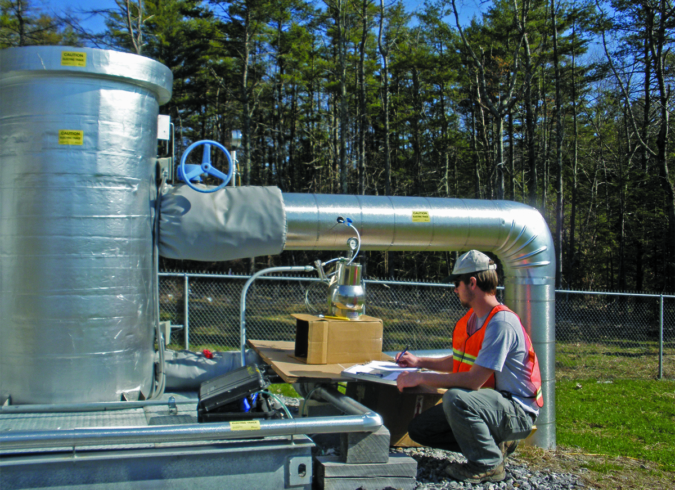The New Hampshire Department of Environmental Services (NHDES) Air Resources Division (ARD) is proposing changes to Env-A 1400, Regulated Toxic Air Pollutants “to simplify rule language, and incorporate changes to RTAPs due to updates made to the list of chemical substances by the American Conference of Governmental Industrial Hygienists (ACGIH) and the US EPA’s Integrated Risk Information System (IRIS).” (https://www.des.nh.gov/documents/env-a-1400-draft.pdf)
Of particular interest to sources like landfills, landfill-gas-to-energy (LFGTE) facilities, and wastewater treatment plants (WWTP), NHDES is proposing to revise a variety of 24-hr and Annual Ambient Air Limits (AALs) and De Minimis values, including those for hydrogen sulfide and formaldehyde:
| Constituent | 24-hr AAL (µg/m3) | Annual AAL (µg/m3) | ||
| Current | Proposed | Current | Proposed | |
| Hydrogen Sulfide | 50 | 5.0 | 2.0 | 2.0 |
| Formaldehyde | 1.3 | 0.44 | 0.88 | 0.29 |
For landfills that must demonstrate compliance with AALs (or may need to in the future), this order of magnitude reduction in the hydrogen sulfide 24-hr AAL could be challenging. For industrial facilities with engines or turbines combusting natural gas or landfill gas, demonstrating compliance with reduced formaldehyde AALs will be even more difficult than in the past.
Also of note among the anticipated changes, NHDES is proposing the following two new rule additions:
- Env-A 1403.01, which states that “the owner or operator of any process or device at a stationary source subject to this chapter shall manage emissions of RTAPs such that the concentrations of RTAPs in ambient air resulting from those emissions shall not exceed the AALs for those RTAPs at and beyond the compliance boundary for the stationary source.”
- Env-A 1404.06(4)(b), which states that “the concentration of each RTAP is less than or equal to the corresponding AAL” when considering alternative methods for demonstrating compliance.
It is unclear what the implications of these additional rules will be when it comes to proposing alternative compliance methods, particularly because formaldehyde is ubiquitous in ambient air due to a wide variety of biogenic and anthropogenic emissions and background concentrations in the ambient air in many locales exceed both the current and proposed 24-hr AALs.
These are proposed changes and public comment has yet to be solicited by the NHDES. If you have any questions or are concerned about the implications for your facility, please contact Lisa Damiano or Heather Little.
Posted In: News
Tagged In: Industrial





